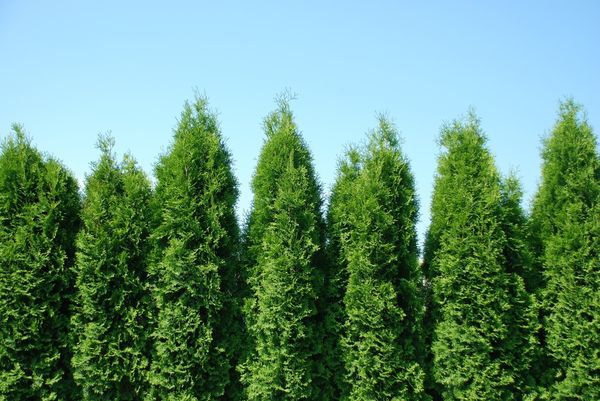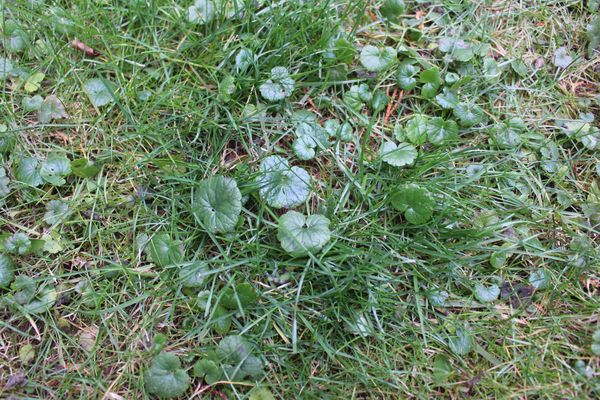I believe in planning landscapes around already-existing trees rather than removing them. But sometimes, cutting down a tree is the best course of action.
You may need to remove a palm tree from your property for various reasons. For instance, you may be attempting to prevent the spread of illness among plants. Or your region may consider the palm variety to be an invasive species.
There are several ways to remove trees safely and effectively. I'll describe how to destroy palm trees in this post without causing any property damage or putting anyone's safety in danger. Are trustworthy techniques that don't entail chopping down your palm.
Palm Tree Killing Without Cutting Them Down
The success of various removal methods is one of many factors in determining whether a palm tree must be taken down. Large trees should often be felled before removal since doing so may be dangerous.
Dead trees fall; it's a fundamental reality. The trunk length of a mature palm presents a serious safety concern if it is treated with girdling, chemical herbicide, or a similar approach and dies. Any tree big enough to cause property damage or endanger bystanders if it falls must unquestionably be removed before treatment.
I would feel fine murdering a palm no taller than roughly ten feet, depending on where it was. But whenever feasible, it's a good idea to err on the side of caution.
A nearby arborist is your best bet for assessing if your troublesome palm has to be cut down or can be killed where it is. It's not always in the great interest of arborists, who specialize in the health and care of trees, to "upsell" you on tree removal services. However, an arborist can also suggest a reliable tree removal firm if falling is the best course of action.
Killing a Standing Palm with Chemicals
There are various alternatives to chopping off the base of a palm tree when killing one. Girdling, injecting herbicides, or spraying leaves with herbicides are a few of the most efficient.
Most of these techniques target trees at their bases; for those that don't, you'll need suggestions on how to deal with the resulting tree stump. It would be best to repeat the selected treatment for each stem in multi-trunked specimens. The untreated trunks will probably live and develop further if you don't.
1. Ring Barking or Girdling
Girdling is one of the most efficient ways to destroy trees. It is so successful that it annually causes numerous unintentional tree deaths. What, however, is girdling?
Girdling is the term used to describe the deterioration or removal of the bark and cambium from a portion of a tree trunk. Water and nutrients can only go up the tree with these layers of wood, and growth ceases. Even though it could take years, death is often inevitable.
Intentional girdling often involves the removal of all of the tree's bark. However, even a partial trunk girdling that is incomplete might be fatal.
You'll need a sharp instrument, such as a chisel, hammer, or hatchet, to wrap a palm tree. Remove the bark around the tree, starting at an accessible trunk part. I advise removing a component at least 4 inches broad for the most outstanding results.
The tree may be killed by girdling alone, although effects might take time. Along with girdling, chemical herbicides may hasten the process.
2. Hack and Squirt or Cut the Surface
The approach known as "hack-and-squirt" is everything but graceful. However, it is a palm removal technique that works well and needs little specific gear.
The hack-and-squirt method of tree-killing requires a sharp object, such as a hatchet, and a chemical pesticide. The bark of the tree will be sliced with the sharp object. The open wounds will next be treated with the herbicide.
I advise making an angle-down cut through the tree. This will create a trench where herbicide may be applied without worrying about runoff.
Around the tree's perimeter, you should make many cuts. To establish the dose and more accurately identify the required amounts, carefully read your selected herbicide label.
3. Basal Bark Treatment
A basal bark treatment may be used to kill off palm trees that are under 6 inches in diameter. This method involves applying a chemical herbicide in oil to the tree's base. The lower 15 inches of the trunk should get a single application of the oil mixture for the most significant effects.
It may take weeks before you start seeing any signs of diminution after basal bark therapy since results are often sluggish to appear. The plant may then live for many more months before finally dying.
Treatment of basal bark does offer benefits. For example, targeting certain palm trees without hurting desirable nearby plants makes it relatively simple. However, it's not my go-to option for removing lone palm trees quickly.
4. Copper Nails
No lack of anecdotal evidence suggesting using copper nails to remove undesirable trees, but I have yet to find any scholarly studies to corroborate these claims. However, I have employed this technique on little fruit trees, which was successful.
There won't be any consequences if you try out copper nails on a little palm tree. To stop new shoots, another option is to try hammering copper nails into the stump. They are available here on Amazon.com for a few bucks.
I wouldn't depend on this purported cure if you needed to remove a palm quickly. A science-supported strategy will provide considerably better results, whether using a chemical pesticide, girdling, or just felling the tree.
5. Herbicide Injection
The hack-and-squirt technique I mentioned before and herbicide injection is highly comparable. Professionals that work with trees prefer this method since it is much more accurate.
Injections of chemicals often take the form of tiny holes drilled into the base of a tree's trunk, into which herbicide-filled plastic syringes are inserted. The needles are left in the bark until the herbicide drains into the tree's vascular system, usually taking a few hours.
The need for specialist equipment is the most significant barrier for the typical gardener or homeowner wishing to remove a palm tree. The hack-and-squirt technique is a superior investment if you need to remove a few trees.
6. Spraying Foliage with Herbicide
A typical foliar herbicide may damage smaller trees. To be absorbed by the tree, such treatments must be administered directly to the palm fronds.
I advise using this method for lesser palm plants for two reasons. First, it's simpler to access the foliage, especially the young leaves emerging from the tree's core. Second, very high dosages of foliar herbicide could ultimately be necessary for giant trees to succumb to it.
Only clear days with no wind should be used for spray herbicide applications. Look up the wind and rain projections before spraying foliar herbicide.
7. Soil Treatment
Some chemical herbicides function by directly hitting tree roots in the ground.
These substances are often utilized when it is desired to kill off the main trunk as well as any current or future branches. But outside of this situation, I'd rarely choose a soil-applied herbicide above the other techniques described here.
Herbicides put in the soil must be handled carefully to avoid run-off that might harm desirable plants nearby. Cornell University also claims that elements like soil pH and composition might affect certain pesticides' effectiveness. This is a significant factor in choosing more natural chemical treatments to manage palm trees.
The Best Chemical Palm Tree Killer
Chemical herbicides come in a variety of forms. In other words, a substance that kills dandelions, crabgrass, and other typical garden and lawn weeds won't always kill palm palms.
Tordon
The active component of Tordon, a chemical herbicide, is picloram.
The University of Florida claims that it is one of the best products for palm trees and that it is quite effective on woody plants. This herbicide may be applied to immature shoots and mature palms using the hack-and-squirt or injection techniques.
This product is a commercial-grade item; thus, obtaining it might be challenging. Although expensive, it is a highly successful treatment for palm trees and other types of trees and tree stumps, and it is accessible at DoMyOwn.com.
RoundUp
Glyphosate is a component used in almost all RoundUp compositions. Even though glyphosate is quite successful against many herbaceous weeds, palm palms shouldn't be treated with it.
I suggest using a pesticide that kills trees for the most outstanding results.
RoundUp will be a fantastic all-in-one option if you have many overgrown bushes, shrubs, brushes, or brambles. Ace Hardware is where you can get it.
Other Tree-Killing Products
When choosing a formula, you should consider your intended application method. For instance, basal bark treatment and foliar spraying are excellent uses for a triclopyr herbicide.
Many standard home products, including bleach, are promoted as effective herbicide alternatives. Remember that home remedies are not always safer for you or the environment than those available in your neighborhood garden shop, even if the effectiveness of these items is sometimes supported by research. Always choose a commercial herbicide that comes with thorough safety and application guidelines.
How to Get Rid of Palm Tree Shoots or Pups
Hand-pulling may be used to manage somewhat sparse new palm tree shoots. Initially, this method needs constant supervision, but with persistence, it may provide excellent long-term benefits.
Herbicides applied before and after a plant emerges effectively on palm pups and shoots. Apply a herbicide to the area where trifluralin or oryzalin is present to stop new sprouts from growing. Use a herbicide to kill palm trees, such as picloram or triclopyr, if the nodes have already started appearing from the soil.
Conclusion
Traditional coniferous and deciduous tree management techniques work well on palms as well.
Always prioritize your safety and the surrounding area while planning your tree removal approach.
If there is a potential that a giant palm tree may fall, don't try to cut it down while it's still standing. Similarly, choosing chemical treatments wisely is essential to reduce run-off and possible risks to neighboring desirable plants.
Drill Holes at a Large Palm Tree
The task of killing palm trees, whether large or small, involves careful consideration and execution. From the initial step of drilling holes into the thick bark to the final act of applying potent herbicides, it's crucial to follow the outlined process for achieving fast results. The techniques used to kill a palm tree may vary, but the aim is to destroy the entire plant, ensuring that it won't rebound and continue to hamper the proper growth of other plants or affect nearby property negatively.
Among the solutions discussed, post-emergent herbicides, bleach, and epsom salt stand out as effective ways to kill trees, including the resilient palm. Spray herbicides serve as potent elements that can penetrate the robust nature of a palm tree's bark, while bleach can kill it outright. Epsom salt, on the other hand, has proven to be a highly efficient home remedy that can help eliminate both small palm tree species and those with a larger structure.
Remember, while it may be necessary to kill palm trees under certain circumstances, the process should be carried out responsibly to avoid damaging other plants in the vicinity. Killing trees should always be a last resort, and it is essential to seek professional advice when necessary. Properly managing your landscaping contributes to a healthier and more balanced ecosystem.






